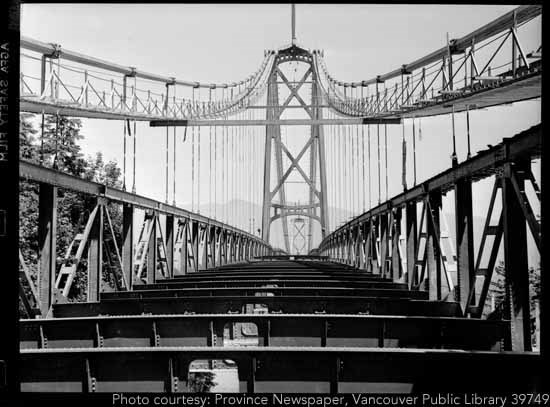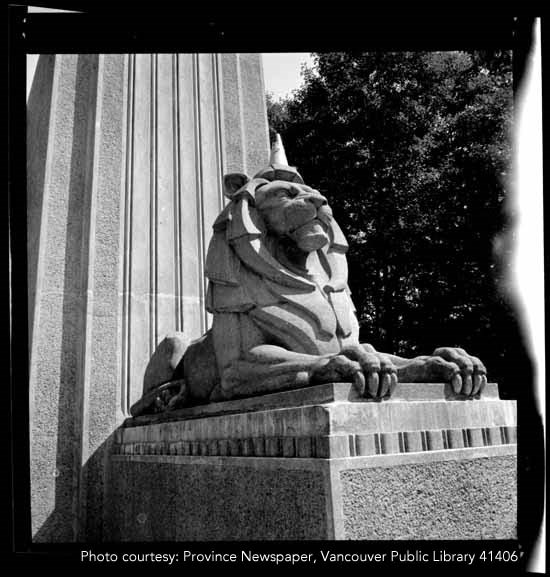 |
Vancouver Heritage Foundation is a registered charity supporting the conservation of heritage buildings and structures in recognition of their contribution to the city’s economy, sustainability and culture. |
It would be hard to imagine Vancouver’s harbour without the iconic Lions Gate Bridge. The bridge has done more than just connect the City of Vancouver with our North Shore neighbours. It has become a landmark for our city. Join Vancouver Heritage Foundation on Wednesday, July 17th at 2:30PM as we celebrate the Lions Gate Bridge with a plaque presentation on the overpass just before Prospect Point in Stanley Park. See the invitation here.
The idea to build a bridge across First Narrows was initially investigated as early as the 1890s, however it took until the 1920s for plans to start taking shape. In December 1933, approval for the building of the bridge was reached through a city wide vote.
Construction of the bridge commenced on March 31, 1937 by clearing ten acres of Stanley Park to create the right-of-way. Upon completion in November 1938, the Lions Gate Bridge was recognized as the longest suspension bridge in the British Empire and one of the biggest construction projects undertaken in Canada during the 1930s. Despite its great size, the open steelwork of the twin towers gives the structure a weightless quality that blends well with its picturesque setting. The bridge was remarkable because of its length and the technical innovations in cable use and construction.
Alfred J.T. Taylor, a prominent engineering contractor and industrialist who had substantial land holdings on the North Shore and who assembled the financing for the project has been called the visionary behind the project. The Guinness brewing company acted as the primary financier, intent on providing access to its British Properties development in West Vancouver.
Named in honour of a pair of pointed peaks along the North Shore mountain range known as ‘The Lions’, the south entrance to the bridge is graced by two monumental Art Deco lion figures which were the last great public work of Vancouver’s foremost sculptor, Charles Marega.
The provincial government purchased the bridge in 1955. It ceased to be a toll bridge in 1963. Overcrowded for decades, the bridge narrowly avoided demolition in the 1990s, instead being refurbished by the provincial government. Its retention indicated the city was beginning to move beyond the automobile age.




